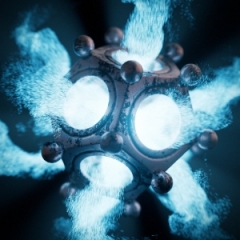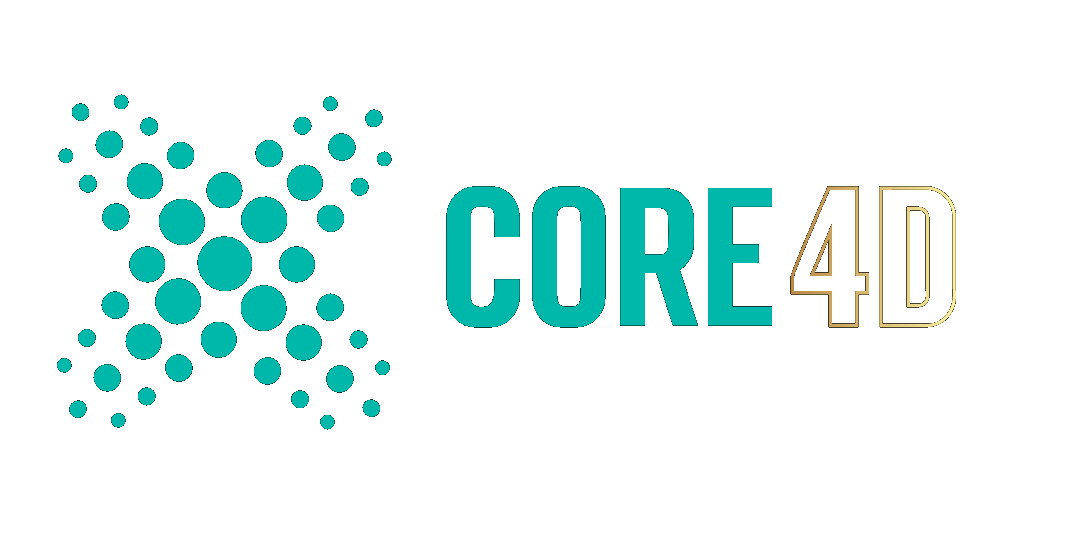All Activity
- Today
-
Hmmm. My understanding of this whole space time thing is quite limited ! Are you sure humans are meant to be thinking about this sort of thing ?! 🙂 More seriously though, I have trouble trying to translate these sort of questions to the sort of perspective / ortho / parallel views we have in Cinema. So, still exploring the theme that simplest may be best, what about 3 shear deformers on a cube, aligned to X, Y, Z accordingly ?! 3 way shear CBR 01.c4d CBR
-
request from the scene nodes discord server... a quick and dirty method of creating random poly islands: 11-sn-random-poly-islands-BASIC.c4d
-
RenDurr joined the community
- Yesterday
-
Hi @Cerbera Thanks for the reply, but you only deformed one face. I need all three faces to be deformed. Notice that in the base of your figure, the axes still form right angles! It is not clear in the figure of the rhombohedron, but all the angles between the axes are different from 90 degrees. Something like that:
-
Does a shear deformer on a cube not give you what you are looking for ? Keyframing the Strength attribute for animation... If not there's always pose morph, which is where I'd be heading next... CBR
-
Eudes Fileti started following Animate cube to rhombohedron
-
Hi everyone, I'm trying to animate the distortion of a cube in order to represent the axes of a non-orthogonal Cartesian space (where the axes form acute angles rather than right angles). As shown in the attached image, my goal is to transform a simple cube into a rhombohedron. To do this, I created a cube-shaped spline and applied three shear deformers, one on each plane. However, when I try to apply the third shear after the first two, the cube becomes asymmetrically distorted. I’ve tried several ways to fix this and achieve a clean prism shape like the one shown, but I haven’t had any success. Does anyone have any suggestions on how to get around this? Bests Eudes cartesiano-espaco.c4d
-
Luigimx joined the community
-
oknj joined the community
-
jola joined the community
- Last week
-
Smolak started following Cinema 4D 2025.2 and RedShift 2025.4 (no joke this time)
-
Yeah right ! Including my one where I said pretty much what you did ! Perhaps there has had to be some restoring from backups or something ? CBR
-
Actually that was much easier than I expected. You just have to relate the position of your boat to the position of your material tag. In your case you'll probably need more than one material tag. The one with the water properties and one with only the displacement. You mix the two (Add Material option), and don't forget to disable Tile for the displacement material tag. It also have to be set to Flat Projection.
-
VectorVictor joined the community
-
AlexG joined the community
-
I think you can easily do what you want using a Shader Field. Plug that texture to it and have ... Oh wait you need the texture to move .... Hmmm... maybe same as above but use the Field to generate a vertex map ... and then the vertex map as a Shader (Vertex Shader) to re-convert it to a texture. Don't forget to make the field child of the moving object... Unfortunately you still need a lot of polygons. I guess this can also work using XPresso if you relate the Offset U and Offset V of the material Tag to the position of the object but converting from absolute values to percentages always gives me headache .
-
Where did all the comments with the waves go ?
- Earlier
-
It's a bitmap. Basically, I have a displacement map of a boat wake and i want to distort the mesh using the map but also move it with the boat.
-
Is the Displacement a shader or a bitmap ?
-
dima joined the community
-
Hi, I'm trying to find an easy way to project a image displacement onto geometry with the ability to control and move the displacement around on the mesh. Similar to camera mapping a texture, but only displacement on an already textured mesh. Cheers Tony
-
Isazuma joined the community
-
peltor joined the community
-

Turn Noise node should behave like an Image Input?
Björn Ewers replied to Björn Ewers's topic in Cinema 4D
Thank you Donovan, That was exactly I was looking for. 😍 -

Premultiplied vs. Straight Alpha - Worst rabbithole I have ever been in
DasFrodo replied to DasFrodo's topic in Discussions
That sounds like you DO NOT like ACES. If so, can you elaborate a bit? Currently experimenting with it in my pipeline and honestly I can't see the benefit yet. I don't work with any real photography, just CGI. -
Duh joined the community
-
-
Premultiplied vs. Straight Alpha - Worst rabbithole I have ever been in
troy s replied to DasFrodo's topic in Discussions
Not sure exactly, but if you can decompose your buffers, you can manually perform the proper alpha over math. Just peel out the associated alpha channel, and multiply it by your under plate to scale the RGB emissions down as per geometric occlusion. Then add the RGB to the result. It's a bit janky as a two step, but the result should theoretically be identical to the proper alpha over calculation, assuming that Adobe isn't botching the RGB with a predivide or something janky in their software stack. The issue of open domain EXRs in Photoshop would be another nightmare stack, as you are then having to form the picture. You'd be at the whim of whatever bad idea Adobe has such as ACES or some other nonsense. I believe there's an EXR plugin and an OpenColorIO plugin that might allow you to negotiate the nightmare fuel of the Adobe designs. -
Donovan K MXN started following Turn Noise node should behave like an Image Input?
-
Turn Noise node should behave like an Image Input?
Donovan K MXN replied to Björn Ewers's topic in Cinema 4D
@b_ewers 1. Change the Maxon Noise > Input > Source to UV/Vertex Attribute, so that the noise samples in 2D Texture Coordinate (UV) space, rather than 3D space. 2. Significantly reduce the overall scale from 100 to something like 1.2 3. Adjust the relative scale to something like 1, 20, 1 to get the vertical streaking. 4. Increase contrast to 1 5. Change the noise type to Turbulence uv-space-noise_v01.c4d -
Hello C4Ds, I would like to use the Noise Node to create lines on a sphere, but it only gives me a perfect noise pattern on the surface. I tested this with noise generated in Photoshop, imported it as an image, and it behaved exactly as I wanted. Does anyone know if there's a workaround or an additional node to modify the Noise Node's behavior to mimic that of an image? Thank you for your help! 😉
-

Premultiplied vs. Straight Alpha - Worst rabbithole I have ever been in
Mash replied to DasFrodo's topic in Discussions
... and on that, is there a way to get this properly into photoshop? PS has no 'interpret' options for me to discard the alpha to do the same trick I do in AE, outside of rendering the image again with no alpha channel. Strictly speaking I CAN get the content into PS and it does look good if I go via 32bit exr, but once in, I cant squash it down to 8 or 16 bit as doing this re-obliterates the glass again. -
Cerbera started following Rocket Lasso Season 7
-
Very pleased to hear that Rocket Lasso is back in action after a very long time away, starting with Season 7 Ep 1 tonight at 8 pm (BST). CBR
-

Premultiplied vs. Straight Alpha - Worst rabbithole I have ever been in
Mash replied to DasFrodo's topic in Discussions
Ok, so my current method of working in AE where I take a copy of the render interpreted with no alpha channel (so I get all the rgb data) and set it to add mode; then use a second copy of the render with the alpha enabled and throw it on top as a solid normal mode is pretty much correct then? ie. its as good as adobe AE is going to get given its shortcomings.



